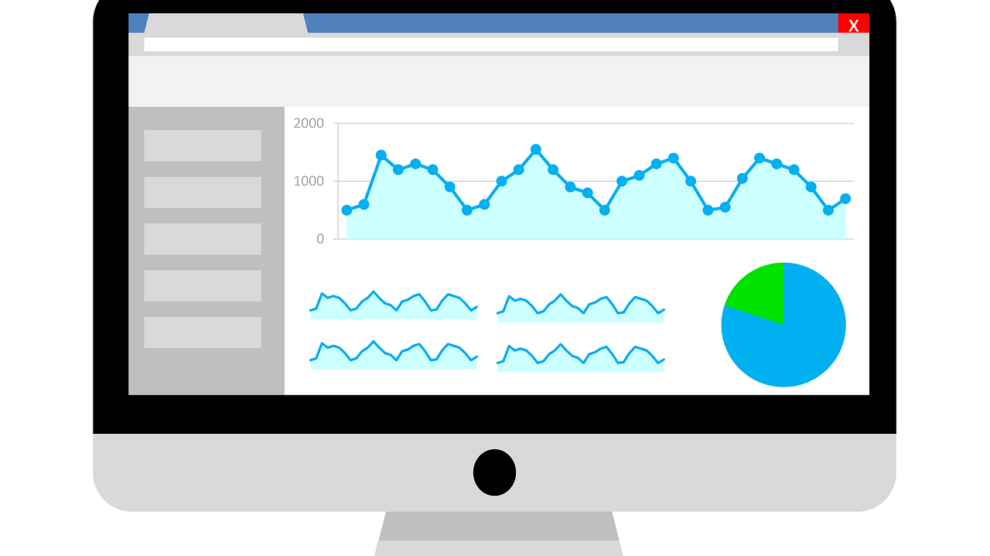Use These Three GA4 Explorations to Create More Impactful Reports
Google Analytics 4 offers marketers and businesses such as a phone repair Airdrie shop plenty of surface-level reports and insights that serve as snapshots. However, pre-built reports can only do so much for your reporting, and that’s where GA4’s Explorations come in handy.
Custom Explorations allow marketers to sift through data and generate a mix of graphs and charts to visualize valuable acquisition, user behavior and conversion data that can reshape marketing strategy with just a few clicks.
GA4 Reports vs. Explorations: What’s the Difference?
Reports and Explorations rely on the same data and offer many of the same filters, metrics and comparisons. GA4 reports are pre-built and include many of the same default reporting categories as Google Universal Analytics’ main navigation menu.
Explorations are more robust and customizable, allowing for the usage of custom metrics and dimensions that you’ve set up in GA4.
More About Reports
Pre-built does not mean useless. Many of these reports include the benchmark KPIs that measure marketing success at organizations of all sizes, including sessions, users and quality metrics like engagement rate and conversions.
Google also added filter features to Reports that are easier to access and toggle on and off, making them more valuable for marketers trying to spot trends and opportunities.
Think of reports as the cookie-cutter option; they’re all the same shape, and you can decorate them a little, but you’ve had a few, they all look and taste the same.
More About Explorations
GA4 Explorations, on the other hand, give marketers a new level of control in shaping site or app data to find hidden trends or behaviors that go deeper than most standard reports.
Why Use Explorations
Explorations allow for more customization, visualization and data manipulation. Marketers can compare dozens of variables at once with just a few clicks, including:
- Standard and custom dimensions.
- Traffic and demographic segments.
- Standard and custom events.
- Key Events (formerly Conversions).
Explorations also allow marketers to filter results by dimension and click on the charts and graphs to automatically “zoom in” on various dimensional breakdowns.
Finally, visualizations are easier to save, export, and share.
The default “Free Form” Exploration in GA4 is the most flexible tool, and Google offers several other Exploration templates for specific insights.
These additional templates are:
- Funnel exploration.
- Path exploration.
- Segment overlap.
- User explorer.
- Cohort exploration
- User lifetime
Each of these templates is worth experimentation, but put our three favorite Explorations at the top of your to-try list …
The Three GA4 Explorations Marketers Should Master
1. Google Analytics 4 Path Exploration
Path exploration in GA4 looks brilliant. This template uses a tree-and-branch graph to help marketers visualize navigation pages, providing useful insight into where users land, what actions they take and where they either convert or bounce.
It’s an incredibly valuable tool for identifying where users get stuck or how they interact on specific pages. Once you know how to use the path exploration, you can build and support page optimization strategies, improve paid landing pages and shorten conversion paths to improve marketing performance.
2. Google Analytics 4 User Explorer
If path exploration is like a bird’s-eye view of a busy highway, the User Explorer tool gives marketers eyes on a specific vehicle – and don’t worry, privacy hawks, you can’t tell who’s behind the wheel.
While path explorations show aggregated data like sessions and users, this tool allows marketers to view historical user data from specific, anonymized user IDs over the past 90 days. With time, marketers can identify user habits from certain channels or along conversion paths.
The most useful way to use User Explorer is to compare similar segments and identify opportunities to improve. For example, compare the conversion rate of weekly users (active within the past seven days) and monthly active users (active within the past 30 days) and ask yourself questions like:
- What different landing pages do weekly users land on that monthly active users don’t?
- Do converting users come back to the same page they landed on?
- What day of the week does each segment convert on, in most cases?
Taking a user-by-user approach provides a granular, personal approach to marketing; you’re putting yourself in the user’s shoes and following their lead.
3. Google Analytics 4 Funnel Report
The GA4 funnel report is all about conversions. To keep driving on the highway metaphor, funnel reports consider the users’ destination (conversion/Key Event) and point out where all the drivers who didn’t make it turned off the highway.
There are two ways to use the funnel report:
- Pre-built funnels are built on specific conversion events, such as a purchase or form submission. This exploration shows the most common drop-off points along the conversion journey.
- Custom funnels have marketer-defined events and/or pages included in the funnel. This is useful for analyzing user behavior based on specific content categories or unique goals.
Funnel explorations help improve user experience by highlighting pages or functions that negatively impact conversion, potentially due to user experience and accessibility problems.
Use All Your Tools
Marketers have a lot of tools built into Google Analytics. Path Explorations, User Explorer, and Funnel Explorations are underutilized, offering a reporting and strategic advantage for marketing professionals willing to dive just a bit deeper into site or application data.
It may take a little practice, but once you get the hang of GA4’s Explorations, they’ll be an integral part of your strategy and reporting for good.





